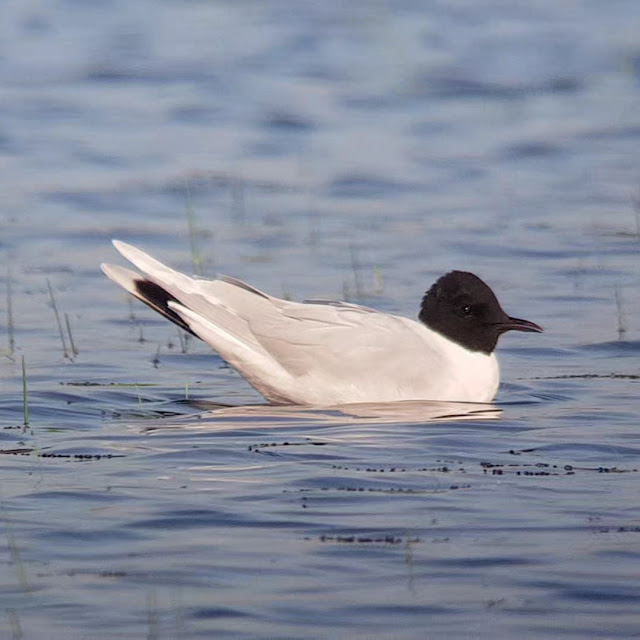I've been meaning to do more frequent updates during this key month but somehow records keep getting ahead of me and I'm always thinking "I'll just wait so I can include today's sightings" and it never quite happens. So in the end I'm doing it at the end of the day where I know what's what.
As expected, there have been a lot of sightings since my last post. With the flood waters still large there's been plenty of wader action though often they haven't lingered. We had 4 Common Sandpipers drop in for the morning only of the 11th. Up to 8 Black-tailed Godwits have dropped in and then moving on during the period. We had a flock of 16 Redshank that stayed for a while. 3 Greenshank also visited the floods. The highlight on the wader front was a flock of 50 Bar-tailed Godwits that were seen to fly over the floods on the morning of the 19th. This was during a period where a lot of Barwit action was happening across the county so it was good to get in on that. Usually Meadow records just comprise of singleton sightings so a flock this large is really unusual for us.
On the waterfowl front, we had two more pairs of Garganey turn up, now making 6 birds in total so far this spring. There have been up to 8 Shelduck and the usual spring Gadwall flock though there are now only a few lingering Teal and Wigeon left on the floods. The exotic pair of Black Swans returned to the floods after a few days away.
 |
| One of the three pairs of Garganey courtesy of Thomas Miller. The drake has rather distinctive spotty flanks and had been seen over at Day's Lock previously. |
As far as gulls and terns are concerned, we were lucky to have 5 Arctic Terns fly over the Meadow. This is a real Meadow rarity but thanks to eager eyes on the skies this is the second year in succession that we've had this species on the year list. Common Terns have started to be seen again in small numbers in amongst the lingering Black-headed Gulls. One of the highlights of the period was a wonderful flock of 13 Little Gulls that dropped into the floods for a few hours before being lured away by 3 over-flying others.
 |
| Little Gull courtesy of Thomas Miller |
We managed to get Osprey on the year list with a bird that flew over on the 21st. What was altogether more left field was a Short-eared Owl that was seen to fly out of Burgess Field and off to the north this morning. This is a scarce patch species which is more usually seen in the winter than in the spring.
The more usual spring fare has been turning up gradually as well. We finally got Wheatear on the year list with a couple of birds on the 17th. The relative lack of grass has meant that there is less area for this species to be seen on. This also applies to Yellow Wagtails which have only been seen in modest numbers so far as well. We had the first calling Cuckoo heard from Burgess Field today as well. The usual warblers are gradually being ticked off with Whitethroat, Sedge Warbler and Reed Warbler all being recorded now. More interested was a singing Grasshopper Warbler in the scrub fields along the canal opposite St Edwards playing fields. This species is now sadly less than annual so it's good to get it on the list. We also has the first Swifts over the last couple of days.
 |
| Wheatear courtesy of Matthew Lloyd |
Just to round things off we finally got Cattle Egret on the year list with one being seen briefly on the 14th and two Cranes flew over today (presumably on their way to Otmoor).
So looking ahead we have perhaps three weeks or so left of prime passage action before things start to tail off. With plenty of flood waters we might hope to get some more waders on the year list as there are quite a few we haven't had yet. Given the state of the floods one might even hope for something like a Spoonbill, which used to be a bit of Meadow speciality back in the day though it's been a few years now since we last had one. There are various other more or less to be expected species still to get and there's always the chance of something left-field at this time of year.
No comments:
Post a Comment